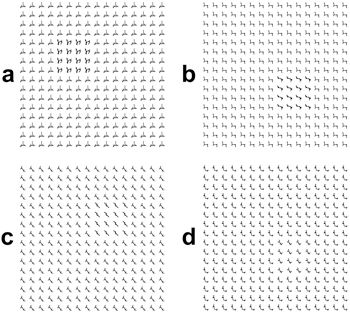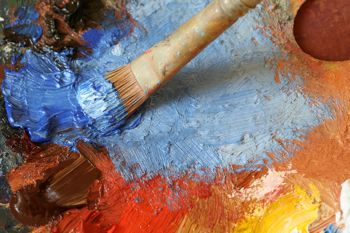A magazine where the digital world meets the real world.
On the web
- Home
- Browse by date
- Browse by topic
- Enter the maze
- Follow our blog
- Follow us on Twitter
- Resources for teachers
- Subscribe
In print
What is cs4fn?
- About us
- Contact us
- Partners
- Privacy and cookies
- Copyright and contributions
- Links to other fun sites
- Complete our questionnaire, give us feedback
Search:
Mass hypnosis: the computer science

You have learnt the magic. Now discover the link to computer science.
Computer vision
This trick relies on people not noticing changes from the original cards to similar cards. It works because all things in an image are not equal, and some things we see are more noticeable than others. That may be an interesting psychological phenomena, but why are computer scientists interested? Computer scientist Milan Verma certainly is. His PhD work at Queen Mary is investigating how to design a computer vision system that 'sees' like a human.
Interesting!
A human-like vision system, if accurate, should agree with people about what things in a scene are salient: which parts attract the eye. That is what Milan's computer model does. It identifies how interesting each part of an image is based on things like the relative brightness of bits of the image.
Many different things affect what is salient. For the cards in our trick, the other values are not cognitively salient: their differences are hard to notice because the numbers are similar ones, and they weren't ones you were focusing on. Also the new cards look very similar to the ones you took away, so that affects what you notice too. It is this latter visual salience that Milan's program tries to model.
Having developed a vision model, how do you test if it really does see like a human? Milan wrote a program that generates patterns to test his model against human perception. Each is made up of random looking shapes. The twist is that inside each pattern is a square that seems to pop out when a person looks at it. The square just looks out of place against the background. The more obviously it pops out, the more 'interesting' it is taken to be.

By combining the vision model with the pattern generation program Milan created a test program. It works using ideas based on Darwin's natural selection (see Breeding salience). You give the test program a number to act as a 'salience value' and it creates a pop-out pattern that is exactly that obvious to the vision model. The bigger the value the more 'interesting' the result should be and so the more obvious the pop-out should be when the model 'looks' at it. Milan then showed the patterns to humans to see if they agreed with the computer model's predictions. Get agreement and the model works! Milan has shown that humans respond exactly the way the computer predicts: the computer model is a good model of the human vision system. That suggests we have a good understanding of how our brain decides visual salience. You can try it yourself with the patterns here.
Design principle
Interface designers control what appears on a computer screen, whether on a DVD's menu screen or in the control panel for an entire city's metro. They must design the elements so people notice the important things. It's obvious that warnings must be salient, but other more innocuous things must be too.
Take a medical infusion pump - the hospital devices that control how much drug a person gets. They are used by the nurses in surgery to control the amount of anaesthetic the patient gets. It's really important that the nurse notices if they type in a dose of 27 rather than .27, for example, or the patient gets an overdose. That might happen if they didn't press the decimal point button hard enough. That small decimal point needs to be very salient. So does the fact that it isn't there! Someone's life might depend on it.
If something changes on the screen (or sometimes if it doesn't change) and it is important, the change had better be salient!
Brush strokes

Once we have a good vision model we can then start to use it. Milan has created another program that paints pictures. It takes a photo and applies brush strokes to make a painting effect. However, more care is taken in the detail of the 'interesting' parts of the picture, leaving course brush strokes in the less interesting parts. How does it decide which parts are interesting? It uses his model of visual saliency of course!
Once you have an eye for what is interesting you can not only do magic but create art too!


